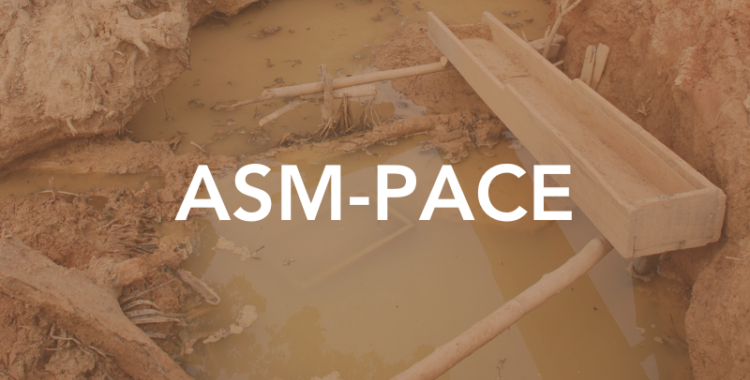Madre de Dios is an Amazon region of Peru where the poverty rates are 8.7% below the average for the country, which means that the people there are typically less poor. Its population is only 0.4% (120,000 people) of the country, its contribution to the GDP of Peru only 0.3% (at constant prices). It is also the third most important gold region in Peru, producing 22 tonnes per annum, being approximately 0.75% of world mined production (2,857 tonnes in 2012). The value of mineral production (about 1.5 billion U.S. dollars), the devastating environmental consequences of the activity, and the ecological importance of the region (there are six protected areas located in Madre de Dios), makes for high tensions and an uncertain future.
According to the Mining Cadastre 2012, the region hosts 2769 mining licences, of which 1440 are pending application and 1192 issued under Decree 708, representing 52% and 43% respectively of total mining rights. Research conducted by the author identified 14.000 miners in the region of Madre de Dios.
The central problem in Madre de Dios is overlapping rights in the same area: 70% of the mineral rights overlie hydrocarbon concessions; 20% are superimposed on indigenous territory; 11% overlap the buffer zones of protected areas; and 5% to 17% overlap ecotourism and forest concessions.
I argue that gold mining in Madre de Dios is unsustainable due to its serious environmental impacts and the absence of public policies that govern it. Moreover, the gold mining activities in this region are spread out, disjointed and isolated from each other, causing a serious impact on the environment. Finally, verbal agreements that establish the social and production relations between parties (such as miners and buyers) are weak and thus more frequently cause conflicts over the management of gold production and trade, than help mitigate such conflicts.
The Peruvian government has passed regulations to manage illegal mining in Peru (DL 1100 published on 18 February 2012 in the newspaper, El Peruano), including specific guidelines for Madre de Dios. The national government has promoted the formation of a zone called the Permissible Mining Corridor. This situation has been extremely influential in determining the regional political agenda, at least for the next five years. This agenda has three main themes: rationalizing overlapping rights (mining, forestry, agricultural and native communities) in the Mining Corridor; improving the management of resources in the Mining Corridor; and retraining of miners outside the Mining Corridor.
It is my proposition that the gold economy can stand up and contribute to regional development in harmony with the environment in one of the most biodiverse regions of the world. These considerations assume that living without gold mining in a region of such biodiversity and conservation importance is unsustainable. To that end, I propose a future atmosphere of coexistence between conservation and the extractives sector for Madre de Dios.
Today, it is impossible to practice mining in the entire region of Madre de Dios because of the existence of protected areas and the fact that the deposits are in specific locations, often co-located in areas of high biodiversity. The Mining Corridor proposed by the Peruvian State is not a continuous and homogeneous zone, but highly heterogeneous due to the presence of farmers and forest concessionaires who do not want to protect their own lands and livelihoods from mining and its impacts. In my view the mining corridor is a possibility and advantage to bring order to gold mining in this region. However, it is important to clarify some aspects and pathways for action.
My proposal is the creation of an archipelago within the Mining Corridor implemented by the Regional Government of Madre de Dios-GOREMAD. I propose an archipelago of nine settled mining 'islands' (located in the Colorado River Basin Sub, Sub Basin Sector Inambari and Madre de Dios River). The archipelago would be managed as a regional mining structure that would be responsible for ensuring formalization of the mining, the introduction of environmentally responsible methods of exploitation, a platform for marketing the gold, strategies for mitigating natural resource management conflicts, and creating gold markets for conventional gold and ethically assured (e.g. Fairtrade, Fairmined) gold, and implemented by GOREMAD. The role of regional government institutions is vital to ensure the achievement of socially and environmentally responsible mining in an area of high biodiversity.
If tomorrow the Archipelago is consolidated through concerted effort by the regional government of Madre de Dios, the main producer of Artisanal and Small-scale gold in the world, with some of the most important areas of biodiversity in the world could be supplying gold to ethically minded European and global markets and consumers.
Through its Guest Blog Series, the ASM-PACE Programme invites ASM experts to share their knowledge, experiences and opinions on issues pertaining to ASM, and particularly on ASM in protected areas and critical ecosystems, with the aim to foster continued dialogue, country-specific learning and share best practices on ASM interventions.
The blogs posted on this site do not represent the views of the ASM-PACE Programme, its donors or partners, or the author’s organization, unless otherwise specified.



